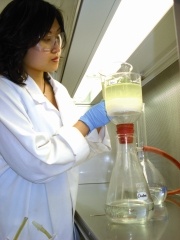Aug 14 2008
UniSA scientists have discovered a simple way to remove bacteria and other contaminants from water using tiny particles of pure silica coated with an active nano-material.

The water treatment process is a new concept, not used anywhere else in the world, which has the potential to make a significant contribution to the health of nations worldwide.
A recent UNESCO report reveals that more than 6,000 people die every day from water-related diseases, and the availability of drinking quality water, especially in the developing world, is fast becoming a major socio-economic issue.
Current water purification techniques are often complicated and use sophisticated equipment, which is expensive to operate and maintain, and includes a final, costly disinfection stage. This can then result in by-products like trihalomethane, which can have serious effects on human health.
UniSA’s Professor of Nanotechnology and Nanomanufacturing, Peter Majewski will share his findings on the new treatment process at the seminar Surface-engineered silica: water treatment for a thirsty world on Tuesday evening, August 12, as part of the University’s free lecture series, Gift of Knowledge 2008.
“The water treatment process can remove bacteria, chemicals, viruses and other contaminants from water much more effectively than conventional water purification methods,” Prof Majewski said.
“Its major benefits include an easy to use chemical and physical treatment process that cleans water without requiring additional energy, and uses recyclable non-toxic base materials like the waste product silica and water, which bring costs down. These features make it a very attractive alternative to desalination, which incurs high energy costs,” he said.
“UniSA’s nano-solution to water purification has the potential to prevent disease and poisoning of millions of people,” Prof Majewski said.
Testing of the active particles demonstrates that they can remove pathogens such as the Polio virus, bacteria such as Escherichia coli, and the waterborne parasite Cryptosporidium parvum.
“The good news is that it should be available within two years.”
Members of the public are invited to register online to attend the seminar tomorrow, Tuesday August 12, at the Mawson Centre, SA Water Lecture Theatre, Mawson Lakes campus from 6pm – 7pm.